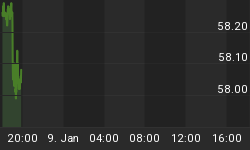China’s economy grew 6.8 percent in the first quarter of this year, compared to the same quarter of 2017, but while the country is targeting an enviable full-year growth rate, looming tariff threats may trip it up by then.
On Tuesday, the Chinese government released official economic data, showing that growth hasn’t skipped a beat as a result of the trade war back-and-forth with the United States. So far, the country’s economic growth rate is in line with the second half of 2017.
But full-year growth will lag slightly behind last year. Annual growth for 2017 was 6.9 percent, and Beijing is targeting full-year growth for 2018 at 6.5 percent.
The more granular details, however, were not as impressive. Most notably, March industrial output missed expectations and first-quarter fixed-asset investment growth was slower, Reuters reported.
March retail sales also rose slightly more than analysts expected.
Asian stocks had mixed responses to the data, opening higher but then largely going flat. Hong Kong and Shanghai retreated Tuesday despite better-than-expected growth figures coming out of Beijing.
“There are two stories here, one backward looking and one forward looking,” Robert Subbaraman, chief economist for Asia excluding Japan at Nomura in Singapore, told Moneycontrol. Related: A Sanctions War Could Cripple U.S. Corporations
“Underneath the stable GDP growth is quite rapid rebalancing from industrial, investment and old economy sectors to consumption, services and new economy sectors like tech. This is encouraging. … The more timely March data, however, point to nascent signs of a growth slowdown underway, led by these old economy sectors," Subbaraman said.
“In practice, growth is almost certainly slower than officials claim and looks to have edged down slightly last quarter. But the big picture is that economic momentum did hold up fairly well in Q1, with the easing of pollution controls sparking a recovery in industrial activity,” Julian Evans-Pritchard of Capital Economics said in comments carried by The Associated Press.
Likewise, speaking to CNN Money, Capital Economics senior China economist Julian Evans-Pritchard, said “We think a further slowdown is on the cards before the end of the year”.
Macquarie’s Larry Hu echoed similar sentiments, calling the Q1 peak of growth in China’s massive export sector and expecting a slowdown in the coming months.
In the meantime, Beijing is shrugging off threats to its growth posed by Trump’s tariff binge, with a government spokesman saying $150 billion in tariff hike threats coming from the U.S. will not derail the $12-trillion-a-year economy.
“China is fully capable of responding to Sino-U.S. trade frictions, responding to challenges and maintaining sustained and health economic development,” National Bureau of Statistics spokesman Xing Zhihong told a news conference.
Related: British Pound Soars To Highest Level Since Brexit
But it’s not only a trade war that has markets acting cautiously: Chinese government efforts to reduce financial system risk and far-reaching policies to close down factories that are being run inefficiently and polluting the atmosphere are also making Asian markets nervous.
Another element subduing responses to China data is transparency, with economists often expressing skepticism over official figures. As Quartz notes, a Chinese governor admitted last year to having inflated GDP figures for years, saying “Officials produce the numbers, and the numbers produce officials.”
By Jan Bauer for Safehaven.com
More Top Reads From Safehaven.com:

















